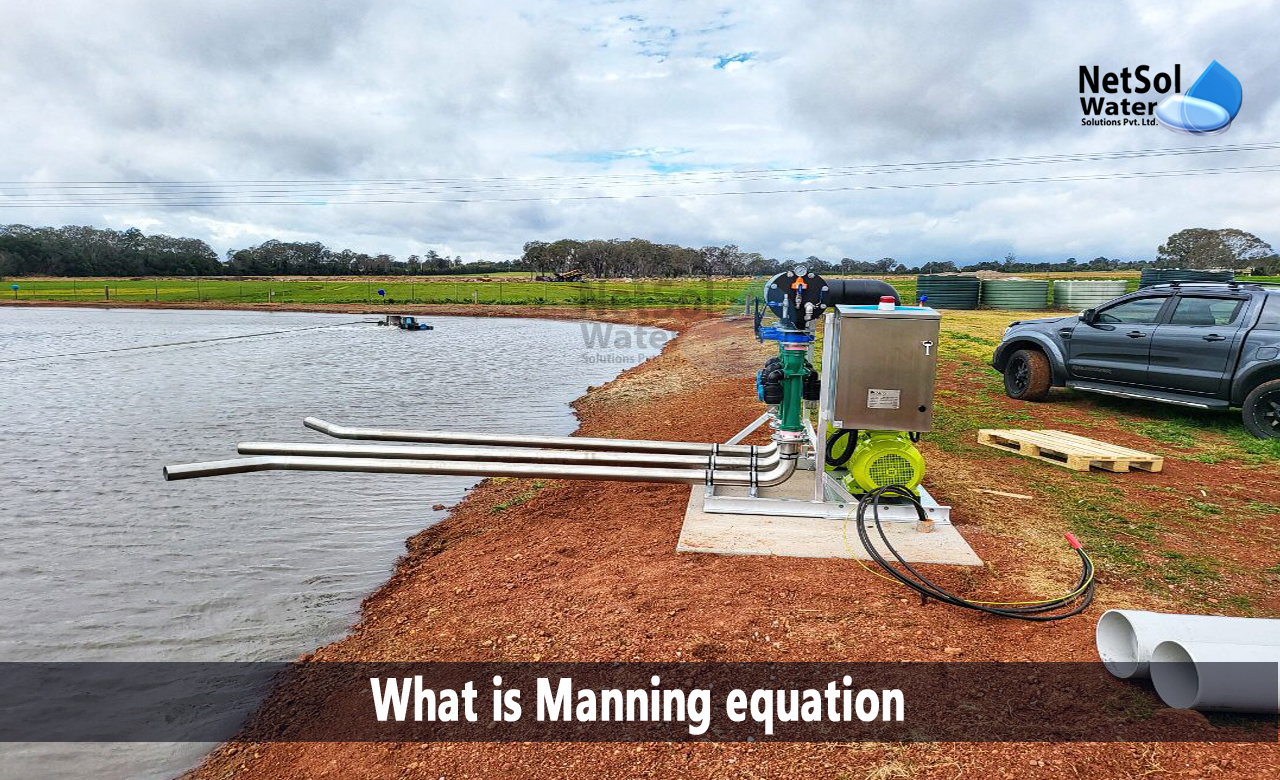The Manning’s equation is a widely used and highly adaptable formula in the field of water resources. It can be used to calculate flow in an open channel, friction losses in a channel, pipe capacity, area-velocity flow meter operation, and many other things.
Manning's formula is frequently used to compute gravity-driven flows in open channels, for uniform steady-state flow.
What is Manning equation?
The Manning formula, also known as Manning's equation, is an empirical formula for estimating the average velocity of a liquid, flowing in a conduit that does not completely enclose the liquid, also known as open channel flow.
However, because partially full conduits have a free surface similar to open channel flow, this equation is also used to calculate flow variables. Gravity drives all flow in so-called open channels.
History of Manning equation
In the late 1800s, Robert Manning developed the Manning equation. It's worth noting that Manning had no formal experience in fluid mechanics or engineering. Because, of his accounting background, he sought the simplest solution that best fit the data.
This is in accordance with the law of parsimony, which states that things should not be multiplied unnecessarily and that the simplest explanation is usually the best. It is an empirical equation because it is derived from observable data, rather than first principles derived from science and physics theories. As long as we remember that the equation was derived empirically, there is nothing wrong with using it in engineering.
A formula for calculating wastewater flow through sewers is provided:

Where,
‘Q’ means flow in cubic feet per second (CFS) or cubic meters per second (m3/s).
‘n’ denotes the channel roughness factor of Manning pipe.
‘A’ represents the cross-sectional area of the flow in square feet or square meters.
‘R’ denotes the hydraulic radius in feet (meters) where {R equals A/P}.
‘P’ denotes the wetted perimeter of the channel or pipe in feet or m.
‘S’ denotes the slope of the channel or energy grade line, in feet per foot (ft/ft) or meters per meter (m/m).
"n" Manning's coefficient
Manning's 'n' value, which is a unit less coefficient, represents the roughness or friction factor of the conduit. Rougher, higher-friction conduits are more valuable, while smoother, lower-friction conduits are less valuable. The Manning equation should make sense with the Manning 'n' in the denominator (bottom) of the equation.
If all other factors were equal, a higher 'n' number, which represents increased conduit friction, would result in a lower flow rate. This should go without saying, as additional friction slows down the flow.
Please keep this in mind when analysing water resource systems, and consider the equation's inherent unpredictability, when assessing the effects of your engineering decisions, including designing channels for water or drainage systems for wastewater.
Manufacturers of water treatment plants and wastewater treatment plants
If you'd like to learn more about wastewater and water treatment procedures, contact Netsol Water, a leading manufacturer of Industrial and Commercial Water Treatment Plants and Wastewater Treatment Plants, among other services. All types of chemicals, physical, and biological pollutants are effectively removed by our treatment systems.
We collaborate with our clients to design a customized water treatment solution that meets your specific requirements, as well as an on-going service plan to completely maintain your system.
Netsol Water is Greater Noida-based leading water & wastewater treatment plant manufacturer. We are industry's most demanding company based on client review and work quality. We are known as best commercial RO plant manufacturers, industrial RO plant manufacturer, sewage treatment plant manufacturer, Water Softener Plant Manufacturers and effluent treatment plant manufacturers. Apart from this 24x7 customer support is our USP. Call on +91-9650608473, or write us at enquiry@netsolwater.com for any support, inquiry or product-purchase related query.



